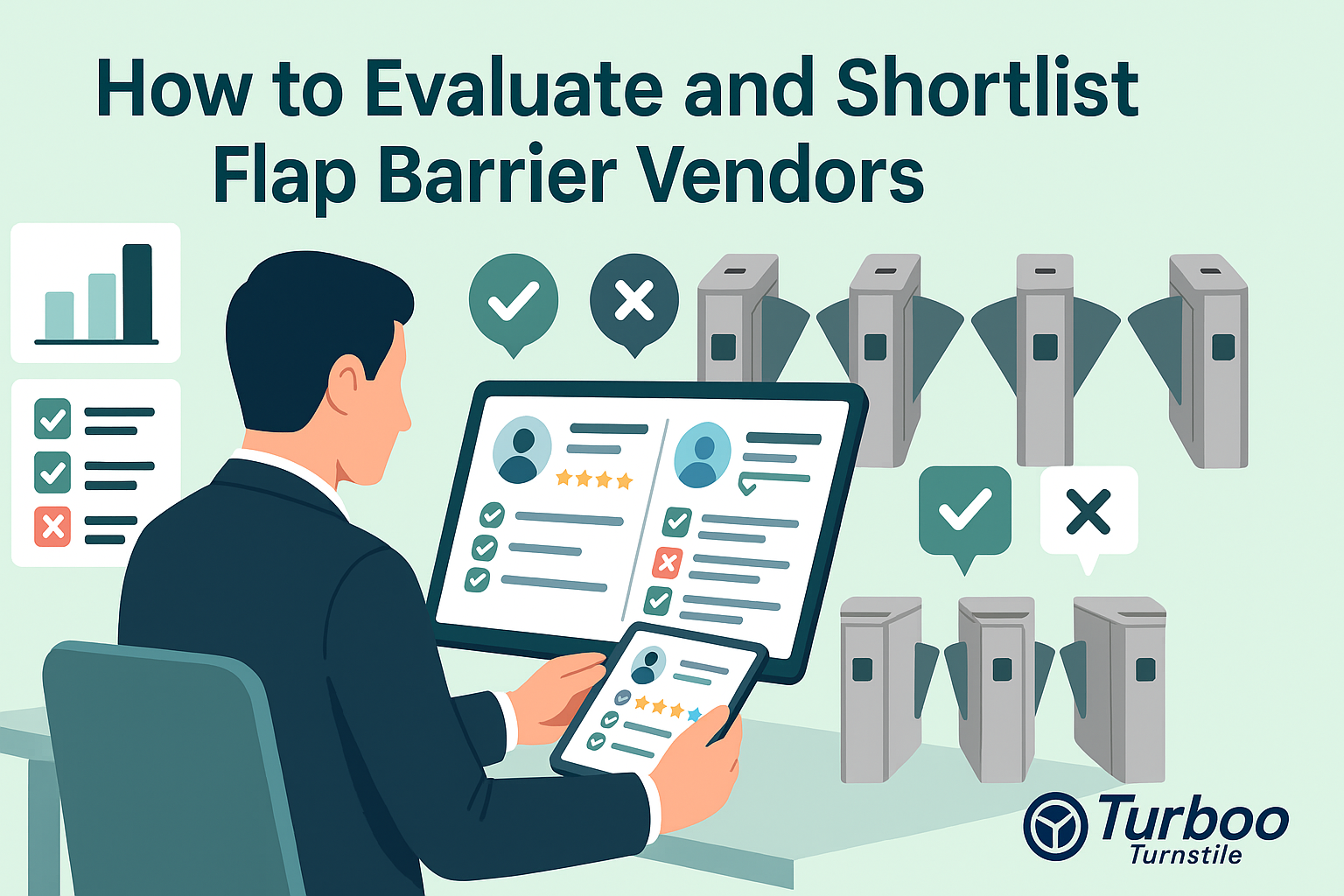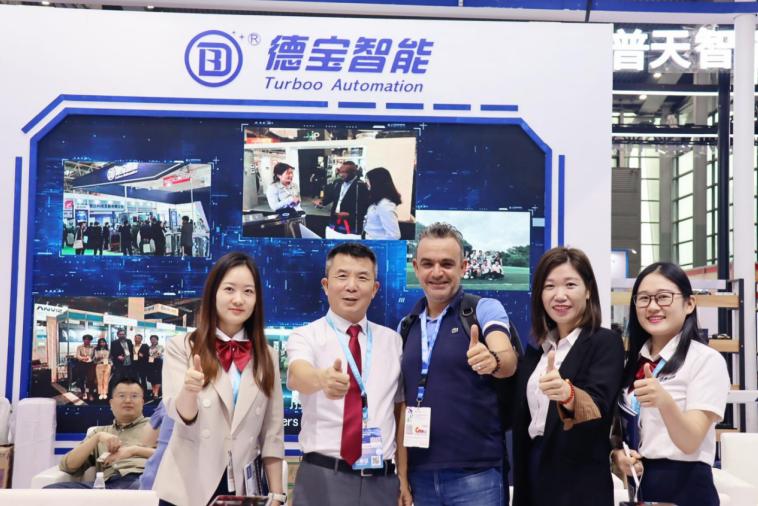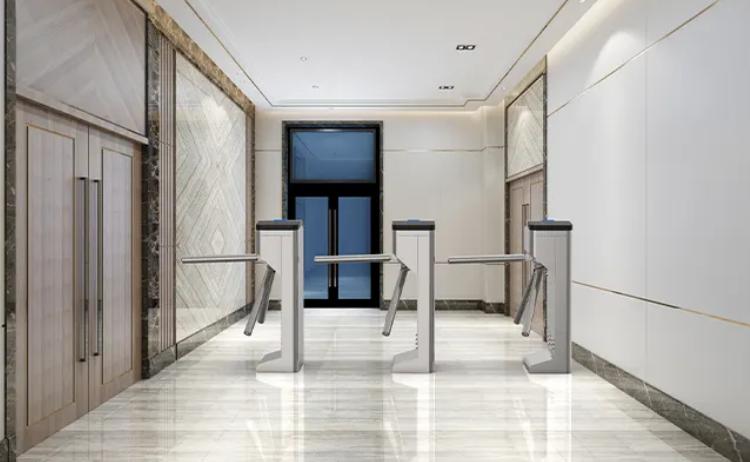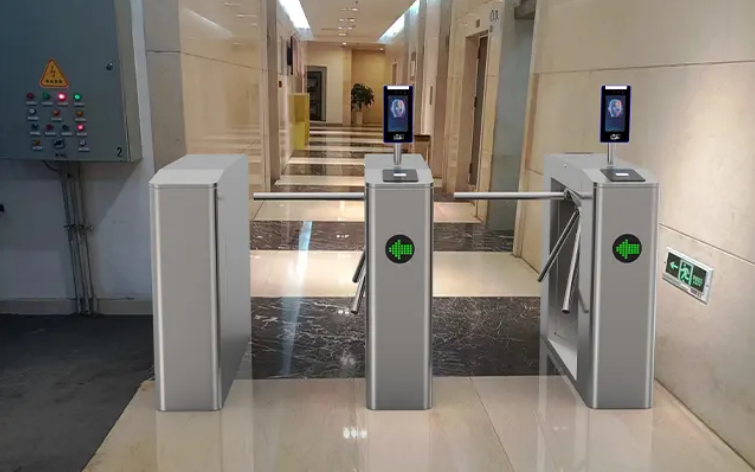How to Evaluate and Shortlist Flap Barrier Vendors


Choosing a vendor for something as integral as a flap barrier system isn’t just a line item in a procurement plan—it’s a foundational decision that influences the safety, efficiency, and long-term reliability of your access control environment. Yet, many security managers and procurement teams find themselves overwhelmed when faced with dozens of flap barrier manufacturers, each promising superior features, faster delivery, and “world-class” support.
Consider the impact of choosing the wrong vendor. An underqualified supplier might deliver equipment that malfunctions under high usage, lacks necessary certification for your region, or fails to integrate with your existing access control protocols. This leads to project delays, system vulnerabilities, and often unexpected repair or replacement costs. Unfortunately, many procurement teams fall into this trap by focusing only on price or stock availability—ignoring the many other variables that define a successful vendor relationship.
This guide walks you through a structured flap barrier vendor check process. It explains how to objectively assess suppliers based on real-world performance, service infrastructure, compliance alignment, and integration capacity. The goal is not just to avoid costly mistakes but to create a repeatable, measurable process for vendor evaluation that strengthens your infrastructure over the long term.
What Are the Stakes of Choosing the Right Flap Barrier Vendor
Selecting a flap barrier supplier is rarely a casual decision—especially in high-security environments like airports, government buildings, or commercial complexes with high visitor throughput. A poor choice can compromise more than operational flow; it can expose the facility to access breaches, create reputational damage, and incur avoidable maintenance costs.
In a real-world example, a corporate facility installed flap barriers from a lesser-known brand because the pricing was attractive and delivery was fast. Within three months, the flaps began to jam frequently during peak hours, and technicians were only available via overseas support with a 72-hour response time. The end result? The barriers were manually overridden more often than not, undermining the building’s access control policies. This example shows how vendor choice is not just about hardware—it’s about the systems and people behind the product.
Evaluating flap barrier suppliers correctly means looking at both the tangible (like certifications and component quality) and intangible (like responsiveness and service commitment). Vendors that shine on both fronts are the ones you want to build partnerships with—not just buy from once.
Beyond that, a strong flap barrier vendor check ensures that your access control strategy remains future-ready. With the rapid pace of upgrades in credentials (e.g., mobile access, facial recognition), you need a supplier who keeps pace with technology and has a roadmap that matches your infrastructure planning.
Core Principles Behind a Flap Barrier Vendor Check
At the heart of any reliable vendor screening is a detailed understanding of your operational needs. Before comparing suppliers, procurement teams must outline what the project truly demands: volume of daily entries, integration requirements, environmental conditions, safety compliance, and even user demographics (e.g., children, elderly). The more precise your specs, the more focused your vendor screening becomes.
A major criterion that should never be overlooked is certification. Top-tier vendors back up their performance claims with test results and compliance documents from recognized bodies. These may include CE certifications for the EU, FCC for U.S. electrical compliance, or specific safety standards required in public installations. You can cross-reference these with security industry guidelines available through groups like the Security Industry Association.
Another core factor is the vendor’s fulfillment reliability. It’s not uncommon for projects to suffer due to last-minute delays or partial shipments. A dependable vendor has transparent logistics workflows and clear fulfillment tracking systems. They can commit to timelines confidently and provide local delivery metrics upon request. If a vendor hesitates to share these details, proceed cautiously.
Remember, a comprehensive flap barrier vendor check doesn’t just look at whether a supplier can deliver—it asks how consistently and how closely their capabilities align with your specific operational demands.
Technical and Operational Evaluation Criteria
Product quality is central to any equipment investment, and flap barriers are no different. A credible vendor should allow access to performance metrics, testing conditions, and user testimonials that prove durability in various environments. Be wary of vague descriptions like “high-speed motor” or “premium alloy body.” Instead, look for data: opening/closing cycle speed, failure rate under 100,000 operations, and ingress protection (IP) ratings for outdoor models.
But technical specs alone aren’t enough. Evaluate the vendor’s after-sales structure as rigorously as you would their product. Do they offer service-level agreements (SLAs) for repairs and maintenance? How quickly can they dispatch a technician to your location? If their support structure is weak, even the best hardware may become a liability.
Another increasingly vital criterion is integration readiness. A flap barrier isn’t a standalone product—it lives inside your building’s broader security ecosystem. It must interact with access control panels, credential readers, and often centralized management software. Vendors who support open protocols (like Wiegand or RS-485) and modern API integrations are far easier to incorporate into scalable systems.
For more on verifying product integrity before you buy, explore this detailed guide on flap barrier quality check, which outlines how to validate vendor claims through performance testing.
Differentiating Between Short-Term and Long-Term Vendor Needs
The ideal flap barrier vendor for a six-month event might not be suitable for a permanent corporate headquarters installation. Yet many procurement teams overlook this difference, using the same evaluation criteria for both.
Short-term needs—like trade shows, concerts, or temporary office campuses—require vendors who can deliver quickly, provide plug-and-play systems, and offer short-term service contracts. For these cases, rapid deployment and minimal infrastructure dependencies matter more than long-term upgrade paths.
In contrast, long-term infrastructure projects prioritize service longevity, hardware scalability, and compliance adherence. You need a partner, not just a provider. The vendor must be able to forecast support for 5–10 years, provide consistent spare part availability, and support integrations with systems that may evolve. They should also commit to security and firmware updates during that period.
Smart procurement teams tailor their flap barrier vendor check process depending on project scope. One checklist won’t fit all situations—but a flexible framework will help adapt evaluation tools to each scenario.
Common Pitfalls When Evaluating Flap Barrier Suppliers
Even experienced procurement professionals can fall into traps when evaluating flap barrier suppliers. One of the most frequent missteps is misinterpreting warranty coverage. Many vendors provide limited warranties that only cover manufacturing defects and exclude critical components like motors or control boards. Some even void warranty terms if the product is installed or modified by non-certified technicians. Without a deep dive into the fine print, what appears to be a generous warranty can leave buyers unprotected in real-world conditions.
Another common oversight is assuming all vendors offer comprehensive regional support. A supplier may have a distribution partner in your country, but that doesn’t always translate to qualified local technicians or stocked spare parts. In practice, this could mean waiting days—or even weeks—for repairs, during which your flap barriers sit idle or must be operated manually. Always confirm whether service technicians are trained, certified, and available within your operational region before signing a contract.
Configuration complexity is another hidden challenge. Some flap barriers may appear simple to integrate but involve highly specific power configurations, control panel settings, or software dependencies. Without clear documentation or vendor-side technical support during deployment, integration delays can stall your entire project. A proper flap barrier vendor check must include discussions with technical leads to clarify onboarding processes and post-installation troubleshooting procedures.
Procurement teams should also watch out for unrealistic promises around customization. While some vendors can tailor flap design, dimensions, or finishes, others may quote customization options they aren’t equipped to fulfill. If a vendor hesitates to share lead times or documentation for modifications, that’s a warning sign. Customization should be backed by factory workflows, CAD references, and client case studies—not just marketing claims.
Avoiding these pitfalls starts with thorough due diligence. Ask tough questions, request documentation, and don’t accept vague or inconsistent responses. A reliable vendor should welcome scrutiny—they know their product and service offering can stand up to it.
The Role of Procurement Planning in Vendor Evaluation
A successful flap barrier deployment begins long before you contact vendors. It starts with procurement planning—outlining the functional, technical, and strategic goals of your security project. Only then can your flap barrier vendor check align with real needs rather than assumptions or sales hype.
One key planning principle is timeline management. Some procurement teams wait too long to begin vendor screening, forcing rushed decisions that compromise quality or compatibility. Others rely on outdated specs or infrastructure blueprints, only to discover during installation that the barrier size or access control format doesn’t match the actual site requirements. Early coordination between your planning team, IT department, and security integrators ensures that all technical and site-specific considerations are accounted for before RFQs (requests for quotation) are sent.
Budget alignment is another foundational step. A clear understanding of lifecycle costs—including installation, maintenance, spares, and upgrades—helps compare vendors more accurately. For example, a vendor offering a low upfront price but limited service support might be less cost-effective over five years than a slightly pricier brand with included support contracts.
Collaboration between departments is also crucial. IT and physical security teams should co-lead the evaluation process to ensure technical integration aligns with user policies, credential management, and broader network security protocols. A vendor may offer excellent hardware but require closed or proprietary systems that conflict with your IT guidelines. Catching these issues early helps prevent future lock-in or costly retrofits.
A solid procurement framework not only improves vendor evaluation—it streamlines implementation, clarifies roles, and sets clear expectations for performance and support. You can access strategic insights into procurement-specific techniques in this guide on flap barrier procurement tips.
Recognizing Industry Standards and Certifications That Matter
Certifications and compliance standards are not just bureaucratic formalities—they are essential proof points that a vendor meets recognized safety, performance, and interoperability requirements. Unfortunately, many buyers gloss over this aspect or rely solely on a vendor’s self-declared statements.
When conducting a flap barrier vendor check, ask to see actual documentation for certifications such as CE (European safety compliance), FCC (U.S. electronic emissions standards), ISO 9001 (quality management systems), or specific ingress protection ratings (e.g., IP54, IP65 for dust/water resistance). For projects in public facilities, you might also require ADA compliance (for accessibility) or local fire safety certifications.
Beyond the certifications themselves, dig into how recently they were issued and under what testing conditions. Some vendors may present outdated certificates or vague claims like “tested for harsh environments” without lab evidence. Request independent lab test results or third-party verification from testing bodies.
Industry groups also provide reliable frameworks for evaluating vendor readiness. The National Institute of Governmental Purchasing (NIGP) offers vendor criteria frameworks, while organizations like the Security Industry Association publish current best practices and certification guidelines relevant to access control.
Verifying a supplier’s certification status isn’t just about box-ticking. It ensures the product you buy won’t become a liability during regulatory audits or compliance checks—and it protects your investment from products that look professional but fall short under scrutiny.
Shortlisting Based on Market Reputation and Reference Projects
While documentation and specs are important, one of the best ways to validate a vendor is through their real-world track record. A supplier who has delivered successful installations for similar facilities likely understands the nuances of your project environment and can preempt issues before they arise.
Request case studies or site references from your vendor. Ideally, these should include facilities similar in size, traffic flow, and access control integration needs to your own. If possible, arrange site visits or speak directly with the facility managers involved. Ask about uptime, post-sale support responsiveness, and integration experiences—these firsthand insights often reveal much more than sales brochures or demo units.
Online vendor reviews and ratings can provide additional context. While you should always take individual comments with some skepticism, recurring themes (e.g., slow delivery, great service teams, software bugs) help round out your impression of the vendor. Global supplier reputation ratings such as those found on NIGP resources are also useful benchmarks.
Another underused resource is your internal facilities team. These are the people who will actually work with the flap barriers daily. Their feedback on what they’ve used before, what challenges they face, and what they need from a support perspective should directly influence vendor shortlisting.
When market reputation aligns with operational feedback and technical fit, you’ve likely found a vendor worth shortlisting.
Final Selection Through On-Site Demos and Technical Trials
Once you’ve narrowed your options down to two or three potential vendors, the most decisive step is scheduling an on-site demo or technical trial. This phase reveals how the flap barrier system actually performs in your environment, with your people, and under your operational constraints.
An effective demo should replicate real-world conditions. Set up the unit where it will eventually be installed, or at least in a location that simulates your traffic volume and security workflow. Run tests with different credential types—RFID cards, mobile passes, biometric scans—and observe both speed and accuracy. Ask your facilities team to evaluate the ease of maintenance, such as how quickly the flaps reset or how accessible internal components are for inspection.
This trial is your opportunity to pressure-test not just the product but also the vendor. How responsive are they to questions from your IT or security leads? Can they adjust settings on-site? Do they provide proper documentation and training materials without being prompted? These soft factors often matter just as much as technical performance.
Also, bring your access control provider or integrator into the trial. A key part of a flap barrier vendor check is confirming that their system communicates smoothly with your existing control panel and credential database. Integration bugs that surface during deployment are far more costly than those caught during a controlled trial phase.
Finally, document everything. Record cycle speeds, error rates, response times, and user feedback. This data provides a clear, objective basis for final vendor comparison and approval. Vendors who support transparent, well-structured trials are also those most likely to stand behind their product after purchase.
Conclusion
Vendor selection should never be a guessing game—especially when dealing with a mission-critical component like a flap barrier. A well-executed flap barrier vendor check gives your procurement team the structure needed to evaluate not only the quality of the product but also the strength of the relationship behind it.
By prioritizing certifications, service capacity, integration readiness, and proven performance, you minimize risk and create a foundation for scalable, secure operations. It’s not just about choosing a device that works—it’s about selecting a vendor who will support your security needs today and well into the future.
Avoid shortcuts, ask hard questions, run real-world trials, and use structured checklists. Because when it comes to security infrastructure, the vendor you choose is just as important as the equipment you buy.
FAQs
How long does a flap barrier vendor check typically take?
Depending on your project scope, a complete evaluation—including RFQs, demos, and reference checks—can take anywhere from 3 to 8 weeks.
What certifications are non-negotiable for access control vendors?
CE and FCC certifications are essential for safety and electronics compliance. ISO 9001 and IP ratings are also important for quality and environmental protection.
Can vendors without local support still be considered?
Only if they have strong remote support infrastructure, guaranteed shipping of spare parts, and an SLA that covers these gaps. Otherwise, local support is strongly recommended.
What should I prioritize—delivery time or customization options?
For permanent installations, customization usually outweighs speed. But for temporary projects or high-urgency replacements, fast delivery might take precedence.
Are demo units mandatory before finalizing a vendor?
Not mandatory, but highly advisable. A technical trial reduces post-installation surprises and allows for hands-on evaluation of integration and usability.












